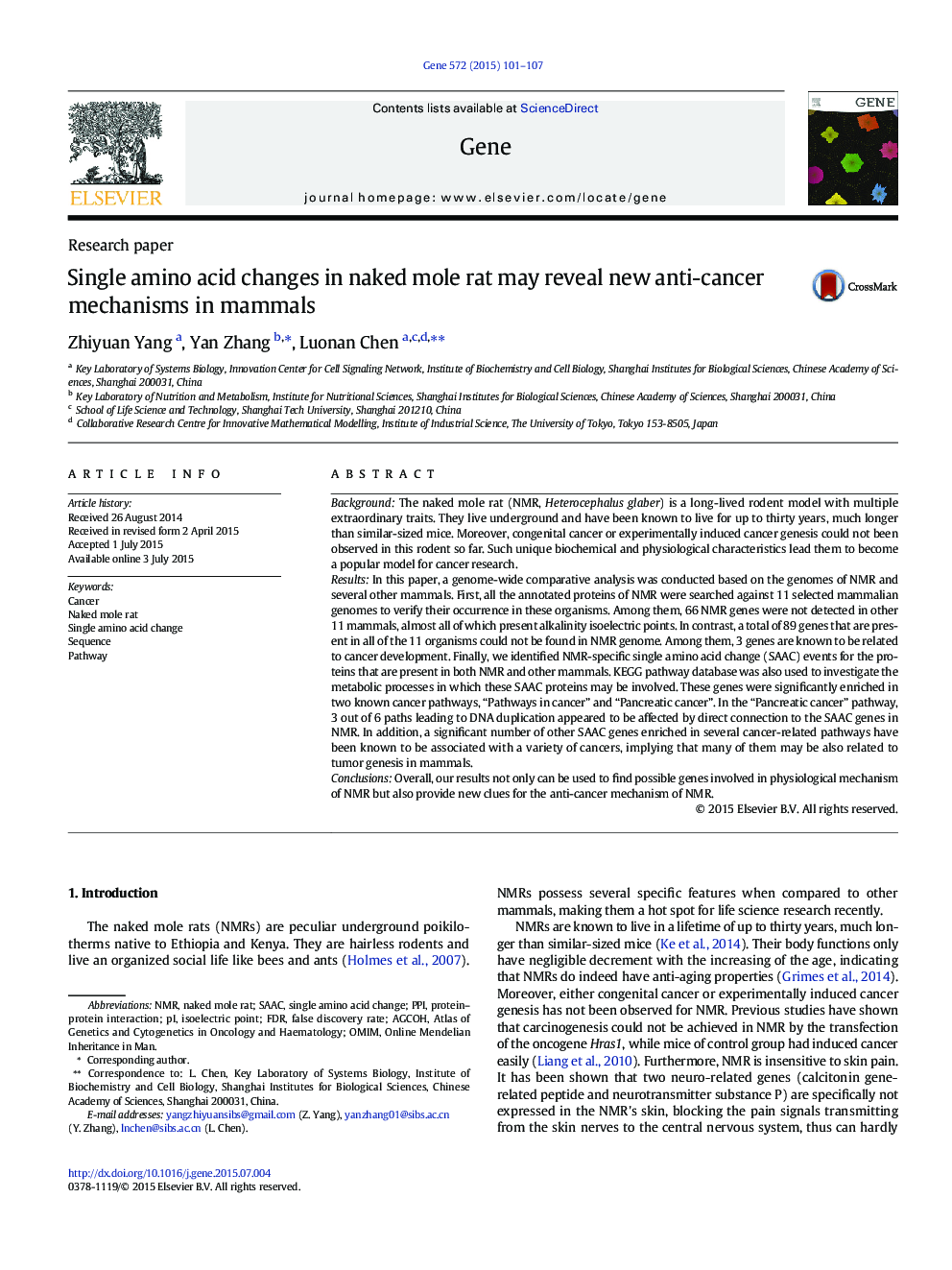| کد مقاله | کد نشریه | سال انتشار | مقاله انگلیسی | نسخه تمام متن |
|---|---|---|---|---|
| 2815516 | 1159874 | 2015 | 7 صفحه PDF | دانلود رایگان |
• 66 NMR-unique genes were detected, most of which present alkalinity.
• 3 cancer-related genes (Mnda, Dap10, Serpinb10) were detected missing in NMR.
• SAAC genes were detected and significantly enriched in cancer-related pathways.
• New gene clues (Smad3, Ctbp2, Stat3, etc) were provided for cancer research of NMR.
BackgroundThe naked mole rat (NMR, Heterocephalus glaber) is a long-lived rodent model with multiple extraordinary traits. They live underground and have been known to live for up to thirty years, much longer than similar-sized mice. Moreover, congenital cancer or experimentally induced cancer genesis could not been observed in this rodent so far. Such unique biochemical and physiological characteristics lead them to become a popular model for cancer research.ResultsIn this paper, a genome-wide comparative analysis was conducted based on the genomes of NMR and several other mammals. First, all the annotated proteins of NMR were searched against 11 selected mammalian genomes to verify their occurrence in these organisms. Among them, 66 NMR genes were not detected in other 11 mammals, almost all of which present alkalinity isoelectric points. In contrast, a total of 89 genes that are present in all of the 11 organisms could not be found in NMR genome. Among them, 3 genes are known to be related to cancer development. Finally, we identified NMR-specific single amino acid change (SAAC) events for the proteins that are present in both NMR and other mammals. KEGG pathway database was also used to investigate the metabolic processes in which these SAAC proteins may be involved. These genes were significantly enriched in two known cancer pathways, “Pathways in cancer” and “Pancreatic cancer”. In the “Pancreatic cancer” pathway, 3 out of 6 paths leading to DNA duplication appeared to be affected by direct connection to the SAAC genes in NMR. In addition, a significant number of other SAAC genes enriched in several cancer-related pathways have been known to be associated with a variety of cancers, implying that many of them may be also related to tumor genesis in mammals.ConclusionsOverall, our results not only can be used to find possible genes involved in physiological mechanism of NMR but also provide new clues for the anti-cancer mechanism of NMR.
Journal: Gene - Volume 572, Issue 1, 1 November 2015, Pages 101–107
